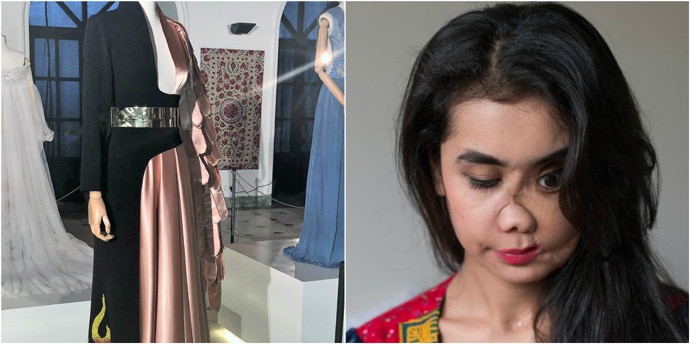Afghanistan has many superwomen. No, their dreams are not borrowed from the US or Taliban

Afghan women are resilient, fierce, powerful, intelligent.
Nearly four years ago, a mob of men killed a young woman named Farkhunda Malikzada in a Kabul street — because of a false blasphemy accusation.
Today, the Taliban are mounting deadly attacks across Afghanistan.
Meanwhile, Zalmay Khalilzad, US special representative for Afghanistan reconciliation, is negotiating with the Taliban.
Ambassador Khalilzad’s wife, Dr Cheryl Benard, presented an essay in National Interest, a US-based publication, explaining how Afghan women were relying on US troops and cash to achieve liberation. The title of the essay is: Women are in charge of their own fate. To many, this seemed disrespectful and a negative portrayal of ground realities.
Now, forget all of this. Take a look at Afghan women through an artist’s perception.
Through her work, Rada Akbar tells the world about the past and present — and criticises the status quo.
Throughout the centuries, women have been involved in art — as creators and innovators of new forms of artistic expression, sources of inspiration, or as significant contributors to historical figures. This is exactly what the ‘Abarzanan’ (superwoman) exhibition, launched on March 8, is all about — honouring four historical and four contemporary women for their contributions through wearable monuments.
The early spring crowd walked through the most popular space — Queen’s Palace in the Garden of Babur in Kabul, Afghanistan. Surrounded by the beautiful landscape, accentuated by music that uplifts your energy, every step takes you back in time and yet, you will be rooted in your present.
With Rada’s sense of strength and confidence presented through her work, the messages gained commemorated women’s history month.
My narrative of the pieces that were exhibited is as follows:

Blood and death have never been portrayed so positively as Rada takes the energy and associated emotions of Rabia Balki, the 10th century poet, to project what legends say about the heroic tale of Rabia, riding into a battle courageously to save the love of her life, Baktash. She wins his heart, only to never be with him.
She became the victim of a culture in which a rich girl can’t be with a poor boy. People thought this relationship was immoral. The secret, the pain, the love, the oppression and the silence were perfectly expressed through the art.

Performing in chaos is the direct confrontation of symphony and war.
Rada’s monument of Negin Khpalwak, the 22-year-old first female conductor, is structured, poised, young and bright. Negin Khpalwak didn’t battle in the wars that Afghanistan is known for. Instead, she fiercely pursued her passion for music. The danger in performing doesn’t compare to the melody of Negin’s gift.

Dark past and wings for my future was Rada’s inspiration for Shakila Zareen — a 24-year-old survivor and advocate. Shakila lost much of her face after being shot by her husband.
Multiple surgeries later, she has a new home in Vancouver and is an activist against domestic violence. Rada owes deep respect to and has a strong friendship with Shakila. So her monument screams defiance as beautiful embroidery and exotic features display maturity and leadership.
Who is Rada Akbar?
The eldest of five super(women) Akbar sisters. A photographer, designer and writer. Rada is tall, striking, fashionable, poised and eloquent. When she speaks about women's empowerment, she finds that she connects very deeply with Queen Soraya Tarzi, considered to be the most eminent and revolutionary woman in Afghan history. She was a leader, feminist, progressive and a leading intellectual.

Rada was influenced by her father as he always said, "We have a responsibility to empower others when you possess any power (talent)."
Many women in Afghanistan are today concerned that the return of the Taliban will take away their liberation — Rada feels the same.
She said, "I rather die in a suicide attack rather than to be stuck at home without freedom." Rada said that Afghan society should evolve — not negotiate. She was also very disappointed by Dr Bernard's recent depiction. Speaking of her own life as an Afghan woman, Rada explained that her parents taught her about her rights and how to earn a living as an adult. She is an artist today, not because of the teachings of the West, but for the teaching of her parents.
The uncertainty of the US-Taliban negotiations is what worries women.
It is a misperception that Afghan women are scared — they are not. Afghan women are concerned that they would move backwards.
Rada’s ‘Abarzanan’ was the perfect exhibition to tell the world that Afghan women are resilient, fierce, powerful, intelligent, dedicated — and, undaunted, they will build Afghanistan for a better tomorrow.

